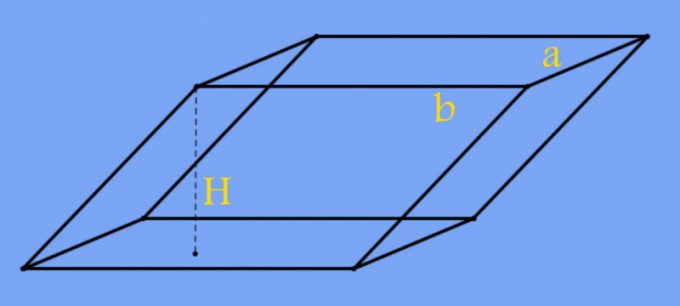Instruction
1
If the conditions of the problem given the volume (V) space bounded by faces of the prism, and the area of its base (s), to calculate the height (H) use the formula common to prisms with a base of any geometric shape. Divide the volume by the area of the base: H=V/s. For example, when a volume of 1200 cm3 and a base area of 150 cm2, the height of the prism must be equal 1200/150=8 cm.
2
If a quadrilateral lying at the base of the prismhas the shape of any regular shapes, instead of square in calculations you can use the edge lengths of the prism. For example, if a square base and a square in the formula of the previous step replace the second degree of length of its edge (a):H=V/a2. And in the case of the rectangle in the same formula, substitute the product of the lengths of two adjacent edges of the base (a and b):H=V/(a*b).
3
To calculate the height (H) is a regular quadrangular prism may be sufficient knowledge of the full surface area (S) and the length of one edge of the base (a). Since the total area is the sum of the squares of the two bases and four lateral faces, a base polyhedron is a square, the area of one side surface must be equal to (S-a2)/4. This face has two common edges with square bases of known size, so to calculate the length of another edge divide the square on the side of the square: (S-a2)/(4*a). Because the prism is rectangular, the edge lengths are calculated by you is adjacent to the grounds of 90°, i.e. coincides with the height of a polytope: H=(S-a2)/(4*a).
4
In a regular quadrangular prism to calculate the height (H) sufficient knowledge of the length of the diagonal (L) and one edge of the base (a). Consider the triangle formed by this diagonal, a diagonal of the square base and one of the side edges. The edge here is an unknown value coinciding with the desired height, and diagonal of a square based on the Pythagorean theorem, equals the length of the side is the square root of two. In conformity with the same theorem we Express the optimum value (leg) through the length of the diagonal prism (hypotenuse) and the diagonal of the base (second leg): H=√(L2-(a*V2)2)=√(L2-2*a2).


